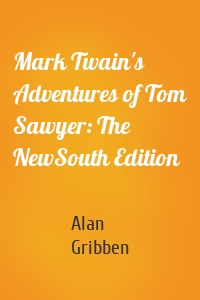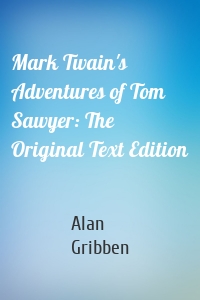Alan Gribben
5 кн.
Mark Twain's Adventures of Tom Sawy...
In a radical departure from standard editions, the coming-of-age story that introduces Mark Twain’s two most enduring literary characters—Tom Sawyer and Huckleberry Finn—is published here with its disturbing racial labels translated as “slave” and “Indian.” Everything else is completely intact in a novel that Twain termed a “hymn to boyhood.” Tom and Huck fish and swim in the Mississippi River, search for buried treasure, and hide in a haunted house. Around the edges of this idyllic boy-life,...
| Автор | Alan Gribben |
Mark Twain's Adventures of Tom Sawy...
This coming-of-age story captures a vanished world of outdoor action and introduces Mark Twain’s two most enduring literary characters, Tom Sawyer and Huckleberry Finn. In a novel that Twain termed a “hymn to boyhood,” Tom and Huck fish and swim in the Mississippi River, search for buried treasure, and hide in a haunted house. Tom Sawyer falls for pretty Becky Thatcher, tricks his pals into painting a fence for him, and stages an elaborate prank on the schoolmaster. Around the edges of this...
| Автор | Alan Gribben |
Mark Twain's Adventures of Hucklebe...
In a radical departure from standard editions, Mark Twain’s most famous novel is published here with one disturbing racial label translated as “slave.” In seeking to record accurately the speech of uneducated boys and adults along the Mississippi River in the 1840s, Twain casually included an epithet that is diminishing the potential audience for his masterpiece. While dozens of other editions preserve the inflammatory slur that the author employed for the sake of realism, the NewSouth Edition...
| Автор | Alan Gribben |
Mark Twain's Adventures of Hucklebe...
Perennially listed among the classics of American literature, Mark Twain’s Adventures of Huckleberry Finn (1885) broke new ground by allowing a teenage boy to narrate his own story. The son of a cruel town drunkard, Huck Finn vividly describes his friendship with Tom Sawyer, his resolve to run away from his abusive father, and his decision to join a runaway slave named Jim in a search for freedom. Jim and Huck’s days and nights on a raft floating down the Mississippi River form one of the most...
| Автор | Alan Gribben |
Mark Twain's Adventures of Tom Sawy...
Mark Twain’s two most famous novels are published here as the continuous narrative that he originally envisioned. Twain started writing Adventures of Huckleberry Finn soon after finishing The Adventures of Tom Sawyer (1876), but difficulties with the sequel took him eight years to resolve. Consequently his contemporary readers failed to view the volumes as the companion books he had intended. In the twentieth century, publishers, librarians, and academics continued to separate the two titles,...
| Автор | Alan Gribben |






